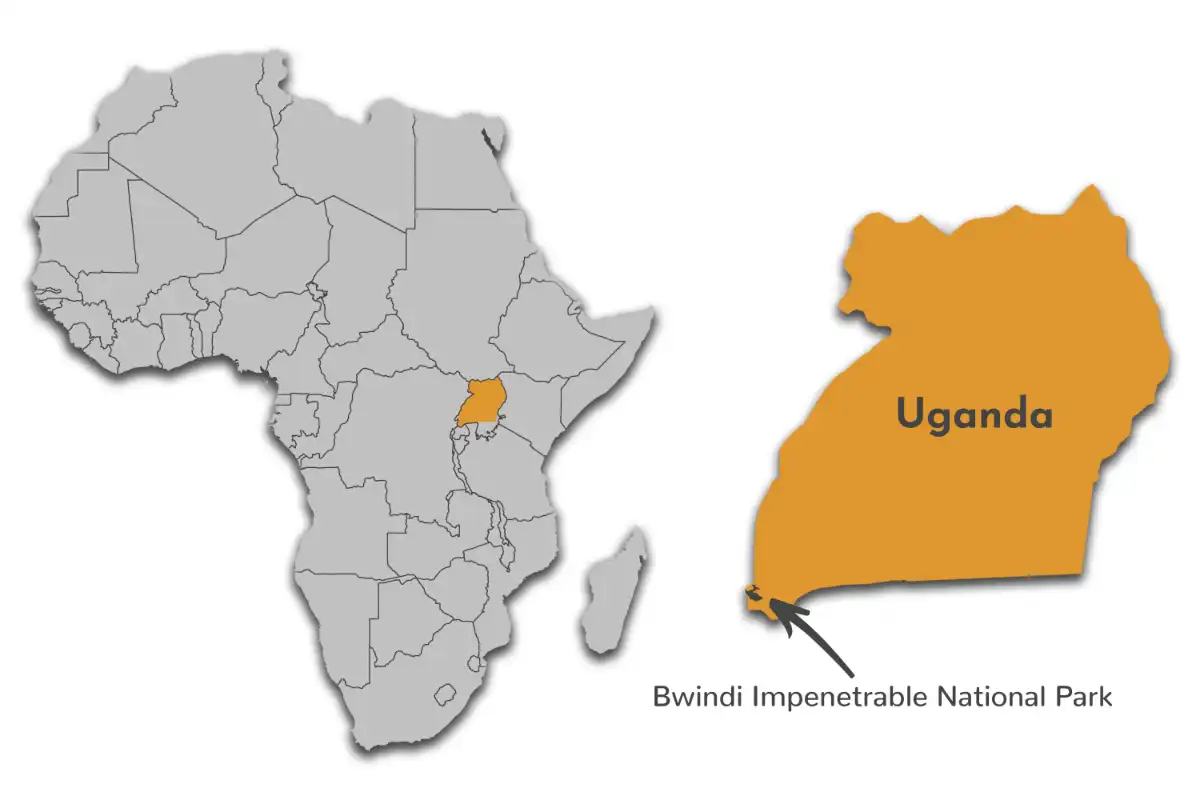Antique Cottages Lake Bunyonyi
Antique Cottages is an exclusive, romantic honeymoon destination, a privately owned, expertly maintained hideaway composed of secluded beautiful family cottages on the shores of lake...

Starting from
$1200PP
Bwindi Impenetrable National Park is an Afro-montane rainforest situated at the edge of the Rift Valley. This ‘impenetrable forest’ comprises steep, mist-covered hills and valleys shrouded by one of Uganda’s oldest rainforests. Bwindi’s main attraction is the mountain gorilla. It is estimated that around 300 mountain gorillas live in the lush hills within the park. It is home to roughly half of the world’s population of mountain gorillas. Bwindi is also home to several other species of primate, including the following: Blue Monkey, Black and White Colobus Monkey, baboon, chimpanzee and Red-tailed Monkey. Here safari enthusiasts get the opportunity to observe this majestic great ape in its natural habitat. Adventurers can also go on nature walks, hikes and bird-watching safaris in this park.
Wildlife10 animals
High SeasonJune to September
Best Time to GoJune to August and December to February

Bwindi is most notable for the 400 Bwindi gorillas, half of the world's population of endangered mountain gorillas. 14 habituated mountain gorilla groups are open to tourism in four different sectors of Buhoma, Ruhijja, Rushaga and the Nkuringo in the Districts of Kanungu, Kabale and Kisoro respectively.
Species diversity is a feature of the park. It provides a habitat for 120 species of mammals. Bwindi also hosts numerous globally threatened species including high-profile mammals such as mountain gorillas, chimpanzees, l’Hoest’s monkeys and African elephants.
The best time to visit Bwindi for Gorilla trekking is from June to August or December to February. Rainfall is the main concern for deciding the time for trekking. During heavy rainfalls, roads are very slippery and hiking is very challenging.
Bwindi is very popular for its variety of species. It provides a habitat for 348 species of birds and 220 species of butterflies. Bwindi hosts numerous globally threatened birds such as the African green broadbill, Grauer’s swamp warbler, Turner’s Eremomela, Chapin’s flycatcher and Shelley’s crimson-wing; and butterflies such as African giant swallowtail and Cream-banded swallowtail. The list of species that you may hope to see is long, but a few tasters include African goshawk, Aggur buzzard and Equatorial akalat, plus a selection of forest woodpeckers, green bulls (always a challenge to identification skills!), warblers, flycatchers, sunbirds and weavers.
Birding can be done all year round in Bwindi but it's best in the month of March & September. During heavy rainfalls from March to May, it's difficult for bird watch.
Bwindi's seasons are similar to those of Volcanoes, with distinct wet and dry seasons. During heavy rainfall in the month of March, April and November, trekking becomes more difficult as roads get very slippery. The best time for trekking is in the Dry season from June to August.
Best Time
June to August and December to February
High Season
June to September
Low Season
March to May, October and November
Best Weather
June to July and December to February
Worst Weather
April, May and September to November
